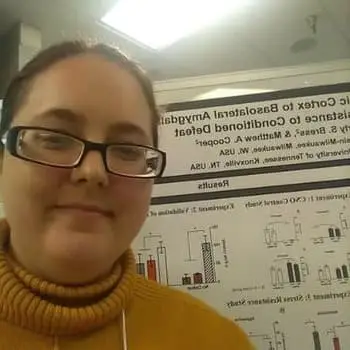There are many types of schizophrenia, and each is characterized by different signs and symptoms. Learn more about schizophrenia and how it can be treated.
Schizophrenia is a chronic and debilitating disorder that causes psychosis, which is characterized by hallucinations and delusions. The prevalence of schizophrenia is about 1.1%, and around 3.5 million Americans are diagnosed with this disorder.
The history of schizophrenia is not as long as some other disorders, and its official recognition dates back about 100 years. Though the term “schizophrenia” wasn’t coined until the early 20th century, the disease was first identified as being its own mental illness in 1887. Interestingly, written documents describing the symptoms of schizophrenia date back to the time of the Egyptians.
Causes of Schizophrenia
Modern scientists have learned more about the underlying neurobiological basis of schizophrenia by seeing how it responded to specific drugs. It was first considered a dopamine disorder because some symptoms were relieved by drugs targeting dopamine. Later, it was considered a glutamate disorder as people began to focus more on cognitive symptoms. Now, scientists recognize that the possible causes of schizophrenia are complex but likely involve both dopamine and glutamate dysfunction.
Treatment Can Be Life Changing. Reach out today.

Schizophrenia may be genetic, and research has indeed identified many genes associated with this disorder. Additionally, studies suggest that the heritability of schizophrenia among twins is roughly 79%. However, environmental factors like maternal infection can also influence schizophrenia.
There is also a possibility of drug-induced schizophrenia. Some researchers have argued that drugs such as LSD, amphetamines, PCP and marijuana can induce the psychotic symptoms associated with schizophrenia.
Types of Schizophrenia
There are five primary types of schizophrenia and a few related disorders. Though the newest edition of the Diagnostic and Statistical Manual of Mental Disorders (DSM–5) no longer describes schizophrenia as these five subtypes, symptoms can vary broadly:
Catatonic Schizophrenia
Catatonic schizophrenia is characterized by disturbances in a person’s movement. Some catatonic schizophrenia symptoms include:
- Being close to unconsciousness
- Repetitive movements for no reason
- Contorted facial movements
- Catalepsy (trance seizure with rigid body)
- Lack of verbal response
- Odd and exaggerated movements
- Meaningless repetition of another person’s words or movements
This form of schizophrenia is considered to be fairly rare. In one study of 568 cases of schizophrenia, 7.6% (43 individuals) had catatonic schizophrenia. People with this type of schizophrenia were also more likely to have older mothers.
Disorganized Schizophrenia
Disorganized schizophrenia is characterized by what is called “disorganized symptoms.” Characteristics of disorganized schizophrenia include:
- Disorganized speech
- Difficulty starting or finishing a task
- Difficulty acting appropriately in social situations
- Poor eye contact
- Lack of facial expressions
In one study, disorganized schizophrenia was significantly harder to treat than types of schizophrenia that displayed other symptoms more predominantly.
Paranoid Schizophrenia
When most people imagine schizophrenia, they tend to think about this subtype. Paranoid schizophrenia symptoms include:
- A preoccupation with delusions about persecution
- Hallucinations that are typically auditory in nature
A study found that people with this subtype have dysregulation in cannabinoid receptor expression.
Residual Schizophrenia
Residual schizophrenia is when a person has a history of at least one episode of schizophrenia but currently displays no symptoms. Interestingly, low doses of the mood stabilizer lamotrigine were shown to improve residual symptoms in patients with treatment‐resistant schizophrenia.
Undifferentiated Schizophrenia
Undifferentiated schizophrenia is a category for people who do not fit into the other subtypes. In other words, they have symptoms that fall into multiple categories. Undifferentiated schizophrenia symptoms include:
- Delusions
- Hallucinations
- Disorganized speech
- Disorganized behavior
- Catatonic behavior
Related Disorders
Several other disorders are related to schizophrenia but are still distinct. The most common disorders associated with schizophrenia are:
Schizoaffective Disorder
Symptoms are similar to schizophrenia and occur alongside depressive or manic symptoms.
Schizophreniform Disorder
Symptoms are similar to schizophrenia, but the disorder lasts for a much shorter amount of time (less than six months).
Schizotypal Personality Disorder
Symptoms include odd and eccentric behaviors, such as ideas of reference (when someone believes coincidences have strong significance). Other symptoms involve odd beliefs, odd thinking, unusual perceptual experiences, bodily illusions, disorganized speech, inappropriate or constricted behavior, suspiciousness or paranoid ideation, lack of close friends and excessive social anxiety.
Signs and Symptoms of Schizophrenia
There are several characteristic signs and symptoms of schizophrenia. Schizophrenia is marked by cognitive symptoms, including:
- Disorganized or slow thinking
- Difficulty understanding
- Poor memory
- Poor concentration
- Difficulty expressing thoughts
- Difficulty integrating thoughts, feelings and behavior.
Additionally, there are positive and negative symptoms of schizophrenia. It is important to note that these categories do not mean some symptoms are good. Instead, “positive” refers to the presence of a symptom, while “negative” refers to the absence of features typically present in healthy people.
Positive Symptoms
A positive symptom refers to the presence of a symptom or trait. Hallucinations and delusions are the two primary examples of positive symptoms, and both are examples of psychosis. Hallucinations are when a person hears, sees or feels things that are not really there. Delusions are firmly held beliefs that conflict with reality.
Schizophrenia delusions are usually either paranoid or focused on feeling grandiose, important or essential in some meaningful way. Research suggests the dopamine system plays a large role in the expression of positive symptoms.
Negative Symptoms
Negative symptoms of schizophrenia refer to the lack of a feature or characteristic that is typically present in a healthy individual. Negative symptoms include unresponsive facial expressions, poverty of speech and thought, lack of pleasure, apathy, reduction in social drive, loss of motivation and lack of social interest.
Schizophrenia and depression can sometimes be confused due to these symptoms. However, the two disorders have a similar biological basis because both are related to a dysfunction in dopamine.
Early Warning Signs
Early warning signs of schizophrenia can be seen in what is called the prodrome phase of psychosis. These signs are essentially a buildup to the psychotic symptoms associated with schizophrenia. The onset of schizophrenia-associated psychosis may be preceded by weeks, months or years of various psychological and behavioral abnormalities. These abnormalities include disturbances in cognition, emotion, perception, communication, motivation, and sleep.
Symptoms in Children and Teens
Although schizophrenia is not typically diagnosed until early adulthood, there are early signs of schizophrenia in children. Psychosis can indeed be present in children. In one study, very few of the children who had psychotic symptoms by age 11 were symptom-free from schizophrenia by age 38. However, symptoms in children were not always predictive of schizophrenia.
Symptoms of schizophrenia in teens can be hard to distinguish from the normal changes that teens go through, but these symptoms include:
- Social withdrawal
- Lack of motivation
- Drop in performance at school
- Difficulty sleeping
- Irritability
- Depressed mood
- Strange behaviors
- Substance use
Schizophrenia Diagnosis
A proper schizophrenia diagnosis can only come from a medical professional, such as a psychiatrist or clinical psychologist. On average, the schizophrenia age of onset is in the late teens to early 20s for men and the late 20s to early 30s for women.
The schizophrenia diagnostic criteria is outlined in the DSM-5, and a structured clinical interview determines whether the criteria are met or not. If the criteria is met, the person will be diagnosed with schizophrenia.
Schizophrenia and Substance Abuse
There is an apparent relationship between schizophrenia and substance abuse. Although it is hard to say that substance use disorders cause schizophrenia, there is a definite correlation between the two conditions. Among schizophrenia patients, 50% show a lifetime prevalence for co-occurring substance use disorders. Research has also shown that dopamine release is reduced in patients who have both a substance use disorder and schizophrenia.
Some people have also been concerned about a link between marijuana and schizophrenia. Although there is a relationship, current views are that marijuana use during an earlier age accelerates the onset of schizophrenia instead of causing it directly. There is also an association between schizophrenia and alcohol, as people with schizophrenia are at an increased risk for alcohol use disorder.
Schizophrenia Treatment and Prognosis
Medicine and psychiatric treatment have come a long way over the last few decades. Schizophrenia prognosis is more positive now than it used to be, and there are multiple treatment options for the disorder. Treatment options include:
Dual Diagnosis Treatment
This is when professionals treat drug use and mental health disorders such as schizophrenia simultaneously. A dual diagnosis of schizophrenia and substance abuse can be difficult to treat, but it is not impossible. Positive outcomes are more likely when facilities take a comprehensive, multidisciplinary approach to the treatment of both disorders.
Medication
Using medications to treat schizophrenia is common. Common schizophrenia medications include antipsychotics like aripiprazole (Abilify), lurasidone (Latuda), olanzapine (Zyprexa), quetiapine (Seroquel) and risperidone (Risperdal).
Therapy
Therapy for schizophrenia is another essential component of the treatment process. While cognitive behavioral therapies are useful for some people, there is mounting evidence to support the use of cognitive enhancement therapy for schizophrenia. Cognitive enhancement therapy is an approach that manages cognitive impairments through computer-assisted neurocognitive training and group-based social-cognitive exercises. Electroconvulsive therapy for schizophrenia has also been shown to be effective when combined with antipsychotic treatment.
Coordinated Care
Coordinated specialty care for schizophrenia is a recovery-oriented treatment program for people with an early diagnosis of psychosis or schizophrenia. Research has shown that people have the best long-term outlook when they receive intensive help after the first episode of psychosis and schizophrenia.











